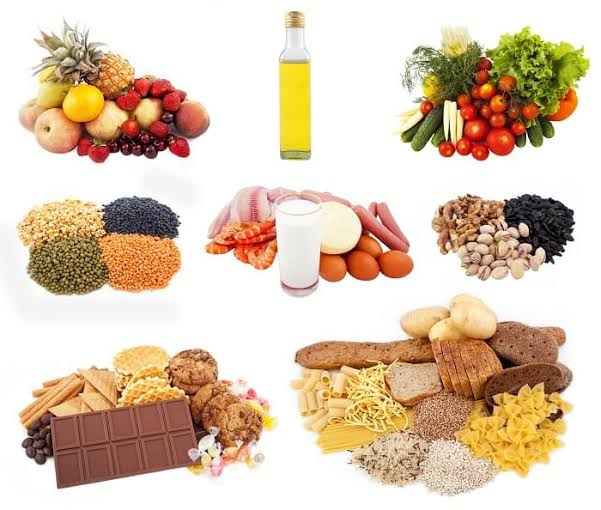Carbohydrates
The nutrient that humans eat the most of each day is carbohydrate. Thus, these comprise the majority of our diet. There are two types of carbohydrates:
- Naturally occurring, as in rice, wheat, fruits, potatoes, honey, etc., or
- Added as sugar to culinary items including coffee, tea, ice cream, and cold beverages, among others.
Certain complex carbohydrates, like starches, require digestion on the part of the organism before they can be utilized. Others have simpler properties, such as glucose, which the body can use right away. The widely used sugar is a simple carbohydrate to digest. Carbohydrates provide 4kcal energy per gram.
Functions of carbohydrates
- Source of energy
- Protein sparing function
- Oxidation of fats
- Helps in muscle work
- Metabolism of proteins and fat in the liver
- Conversion of fat
- Promotes growth of desirable bacteria in the gut
- Biosynthesis of amino acids
- Synthesis of ribose from glucose for RNA
- Flavour enhancing action on the food
Classification of Carbohydrates
- Monosaccharides
- Disaccharides
- oligosaccharides
- Polysaccharides
Monosaccharides
These are substances that can't be hydrolyzed to produce less complex substances. Sweet fruits and certain vegetables (carrots, corn) contain glucose. It is the main byproduct of digestion that circulates in the blood and is used by the cell as an energy source. Ripe fruits, some vegetables, and honey contain fructose. It includes:
Disaccharides
Disaccharides are delightful pairs of sugar molecules that are created when two monosaccharides, or simple sugars, bind together chemically. Enzymes break down disaccharides into their component sugars so that we can absorb them. It includes:
- Sucrose (Glucose & fructose)
- Lactose (Glucose & Galactose)
- Maltose (glucose & glucose)
- Trehalose (glucose & glucose)
Oligosaccharides
These carbohydrates consist of 3 to 10 monosaccharides. There are 2 kinds:
- Fructo-oligosaccharides -> They occur in plants naturally. Banana, garlic, onion, asparagus, and chicory root. These are prebiotic and improves immunity, helps in calcium absorption and bone strength.
- Galacto-oligosaccharides -> They occurs naturally in legumes, oats milk, and dairy. These are also prebiotics, improves stool frequency and may help in reducing constipation.
Polysaccharides
Large molecules known as polysaccharides are composed of linked repeating sugar units. In living things, these molecules sustain structural integrity and store energy. It includes:
Starch -> It is the main storage polysaccharides of plants and found in dietary staples, such as cereal grains, potatoes, and plantains. It is the major carbohydrate in the human diet.
Resistant starch -> It is prebiotic in nature and it escapes small intestine while digestion and becomes available for fermentation by the microflora in the large intestine.
Dextrin -> It leads to degradation of the products of starch.
Non-starch -> It consists of polysaccharides other than starch.
Absorption
Glucose, galactose, and fructose are the three forms of carbohydrates that enter the circulation. The simple sugars enter the portal circulation and are delivered to the liver through the villi's capillaries. Glycogen is created here so that fructose and galactose can be stored. When the body needs glucose, the glycogen is transformed into it.
Metabolism
It involves the following process:
- Direct utilization
- Conversion to glycogen
- Conversion into fat









Comments
Post a Comment